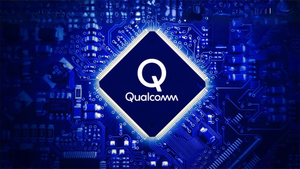
Decentralized Finance (DeFi) stands at a pivotal juncture, presenting a fascinating dichotomy of rapid innovation and enduring systemic challenges. This nascent ecosystem, built on the promise of open, permissionless, and transparent financial services, continues to push the boundaries of what's possible, from instant, global credit markets to integrated payment solutions. Yet, its very growth illuminates persistent hurdles, including pervasive security vulnerabilities, critical scalability limitations, a labyrinth of regulatory uncertainty, and a user experience that often remains an enigma to the uninitiated.
The ongoing evolution of DeFi is not merely a technological advancement but a fundamental reshaping of the financial landscape. Its ability to disintermediate traditional financial services holds immense potential for democratizing access and increasing efficiency, while simultaneously demanding robust solutions to the risks inherent in its decentralized architecture. Navigating this dual horizon—celebrating its revolutionary spirit while diligently addressing its foundational weaknesses—will define DeFi's trajectory towards mainstream adoption and its ultimate role in the global economy.
The Ascent of Innovation Meets the Abyss of Vulnerability
DeFi's journey has been marked by a relentless drive to innovate, delivering financial products and platforms that challenge the very foundations of traditional banking. At its core, decentralized credit markets have flourished, allowing users to lend and borrow cryptocurrencies directly through smart contracts without intermediaries. Platforms like Aave (AAVE-USD), Compound (COMP-USD), and MakerDAO operate by algorithmic interest rates and require collateralization, offering unprecedented access to liquidity and financial inclusion, particularly for the unbanked. Aave, for instance, introduced "flash loans," enabling uncollateralized borrowing for a single transaction, showcasing the radical potential for capital efficiency.
A significant stride in this innovation is PayFi, which merges traditional payment systems with DeFi's capabilities. PayFi leverages blockchain and smart contracts to facilitate real-time, peer-to-peer payments, drastically reducing transaction fees and settlement times, especially for cross-border transactions. Imagine freelancers receiving instant, low-cost international payments or e-commerce merchants bypassing hefty processing fees. Platforms like those built on high-throughput blockchains such as Solana (SOL-USD) are ideal for PayFi, enabling use cases from instant invoice financing to "Buy Now, Pay Never" models where generated interest covers payments. The tokenization of Real-World Assets (RWAs) is also gaining traction, with projects like Centrifuge connecting tangible assets such as real estate and invoices to DeFi, attracting institutional capital and offering new investment opportunities.
However, these innovations are shadowed by a persistent array of challenges. Security vulnerabilities remain a critical concern, with smart contract flaws leading to billions in losses. In 2022 alone, over $3.1 billion was stolen in DeFi-related breaches. Notorious examples include reentrancy attacks (like the $80 million FEI protocol hack), oracle manipulations (e.g., bZx protocol in 2020), and flash loan attacks (Harvest Finance, $24 million loss). Cross-chain bridges, vital for interoperability, have also become prime targets, suffering major exploits such as the Ronin Bridge ($625 million) and Wormhole ($320 million) hacks in 2022. "Rug pulls," where developers abandon projects and abscond with funds, and smart contract bugs (e.g., The DAO hack of $50 million in 2016) further erode trust.
Scalability issues present another formidable hurdle. Ethereum's (ETH-USD) mainnet, despite being the largest DeFi hub, struggles with limited transaction throughput (25-35 TPS), leading to network congestion and exorbitant "gas fees" during peak activity. For example, the launch of a new token on September 1, 2025, caused Ethereum gas fees to spike, making token swaps cost over $145 at peak. While Layer 2 solutions like Arbitrum and Optimism have absorbed much of this volume, reducing fees by up to 90%, the underlying mainnet limitations persist.
Regulatory uncertainty casts a long shadow over DeFi's future. A lack of clear, consistent global frameworks creates a "regulatory gray area," deterring institutional adoption and complicating compliance. In the U.S., the SEC (Securities and Exchange Commission) often resorts to "regulation by enforcement," classifying some DeFi tokens as unregistered securities, while the CFTC (Commodity Futures Trading Commission) oversees other aspects. Globally, the EU's Markets in Crypto-Assets (MiCA) regulation is a significant step towards clarity, and international bodies like FATF (Financial Action Task Force) are pushing for AML/CFT guidelines. However, defining "decentralization" and identifying "responsible persons" within autonomous protocols remains a significant challenge.
Finally, the user experience (UX) in DeFi is frequently criticized for its complexity. New users are often overwhelmed by technical jargon, intricate wallet management (e.g., seed phrases), and unintuitive interfaces. This steep learning curve is a major barrier to mainstream adoption, requiring a higher degree of technical literacy than traditional finance. Efforts are underway to simplify onboarding, enhance UI/UX design (e.g., Uniswap's "Simple Mode"), and leverage AI-powered agents to abstract complex on-chain actions, but a truly seamless experience for the average user remains largely elusive.
Navigating the Currents: Winners and Losers in the DeFi Tide
DeFi's transformative yet tumultuous evolution is creating a clear delineation of winners and losers across the financial ecosystem. Adaptability, security, and a proactive stance on regulation are proving to be critical differentiators.
Traditional financial institutions (TradFi) face a significant strategic dilemma. Those resistant to blockchain and DeFi technologies risk being outcompeted by more efficient, transparent, and accessible decentralized alternatives. Legacy institutions with high operational costs and opaque practices could see their market share eroded. However, forward-thinking players like JPMorgan Chase (NYSE: JPM) and Goldman Sachs (NYSE: GS) are emerging as potential winners. They are actively investing in blockchain technology, developing digital asset capabilities, and exploring tokenized deposits and on-chain collateral. Their existing regulatory infrastructure, vast client bases, and capital provide a robust platform to bridge TradFi with DeFi, offering hybrid products and leveraging DeFi's efficiencies to reduce costs. Payment processors such as PayPal (NASDAQ: PYPL) are also positioning themselves as winners by integrating traditional and crypto rails, capturing value as adoption grows. Custodial infrastructure providers like Coinbase Custody (NASDAQ: COIN), BitGo, and Anchorage Digital are set for growth as regulatory clarity mandates qualified custody services for digital assets.
Among new DeFi protocols, success hinges on sustainable economic models, robust security, and user-centric design. Winners include established decentralized exchanges (DEXs) like Uniswap (UNI-USD) with its Automated Market Maker (AMM) model, and lending/borrowing protocols such as Aave (AAVE-USD) and Compound (COMP-USD), which continue to attract significant liquidity. Liquid staking protocols like Lido Finance (LDO-USD), which allow users to earn staking rewards while retaining liquidity, are also thriving. Projects focusing on Real-World Asset (RWA) tokenization, like Centrifuge and MakerDAO (which generates 80% of its revenue from RWAs), are creating new bridges for institutional capital. Conversely, protocols lacking stringent security audits, sustainable tokenomics, or clear governance are likely to be losers, falling prey to hacks, "rug pulls," and investor distrust. The "move fast and break things" mentality of early DeFi is no longer viable, and projects that fail to adapt to evolving regulatory expectations, particularly concerning KYC/AML, will struggle to gain traction.
Blockchain infrastructure providers are fundamental enablers. Scalable Layer 1 blockchains and Layer 2 solutions are unequivocally winners. Ethereum (ETH-USD), despite its past scalability woes, continues to be a central hub, with Layer 2 solutions like Arbitrum and Optimism enhancing its capabilities. High-throughput alternative blockchains such as Solana (SOL-USD), Cardano, and Polkadot (DOT-USD) are also attracting significant DeFi activity due to their faster and cheaper transactions. Interoperability solutions, allowing seamless asset movement across chains, are also crucial for a cohesive DeFi ecosystem. Blockchains unable to address scalability limitations or lacking interoperability will become isolated and less relevant.
Different user groups experience varied outcomes. Informed retail investors and institutional investors who understand the risks and opportunities stand to win, potentially earning higher returns and leveraging new investment opportunities. DeFi offers unique financial inclusion for underbanked populations globally, providing access to loans, savings, and insurance without traditional barriers. However, uninformed retail investors are often the biggest losers, vulnerable to smart contract exploits, market volatility, and scams, leading to significant, often irreversible, losses. The complexity and lack of recourse in decentralized systems mean that users who are not technically adept or risk-aware face substantial dangers.
Industry Impact and Broader Implications: A Paradigm Shift in Progress
DeFi's dual evolution is not an isolated event but a critical component of broader, irreversible industry trends, fundamentally altering the trajectory of finance and the internet itself. It is at the vanguard of the digitalization of finance and a foundational pillar of Web3, leveraging blockchain and smart contracts to build a transparent, accessible, and user-controlled financial system. This shift empowers individuals with greater autonomy over their assets, reduces reliance on centralized intermediaries, and holds the potential to extend financial services to the 1.7 billion unbanked adults globally, while streamlining cross-border transactions.
The ripple effects on traditional finance (TradFi) are profound. DeFi directly challenges the centralized intermediation that has defined banking for centuries. Its ability to offer higher interest rates on deposits and lower fees on loans forces established players to innovate or face obsolescence. Consequently, many traditional banks and asset managers are moving beyond skepticism, actively integrating blockchain solutions, exploring tokenized deposits, and forming partnerships with DeFi protocols. This isn't necessarily a replacement of TradFi, but rather a modernization, compelling traditional firms to compete on 24-hour trading, faster settlement times, and broader asset offerings. Firms that resist this evolution risk being outcompeted by more agile, transparent, and efficient decentralized models.
Within the DeFi ecosystem itself, the ongoing evolution drives a focus on maturity and sustainability. The early "Wild West" mentality is giving way to a demand for robust security, clear governance, and sustainable economic models. Protocols that prioritize these aspects are gaining traction, leading to consolidation within the space. Innovations like Protocol-Owned Liquidity (POL) are emerging to enhance stability and reduce reliance on external capital, fostering a more resilient ecosystem. The continuous pursuit of technological refinement, including Layer 2 scaling and cross-chain interoperability, further strengthens DeFi's long-term viability.
The regulatory and policy implications are immense and complex. DeFi's decentralized and pseudonymous nature challenges traditional regulatory frameworks designed for centralized entities. Regulators globally are grappling with applying principles like "same activities, same risks, same rules" to novel structures, focusing on AML/CFT, consumer protection, and financial stability. Frameworks such as the EU's Markets in Crypto-Assets (MiCA) regulation aim to provide comprehensive oversight for digital assets, including stablecoins and exchanges, by mandating disclosure and KYC standards. In the U.S., the SEC and CFTC are actively working to harmonize regulations concerning DeFi. A major challenge lies in defining "decentralization" and identifying "responsible persons" in truly autonomous protocols. While regulatory clarity may initially temper rapid innovation, it is deemed crucial for attracting significant institutional capital and ensuring long-term stability.
Historically, DeFi's disruptive potential mirrors past technological shifts in finance, such as the rise of electronic trading and the internet itself. These periods of rapid innovation often outpace regulation, leading to both immense value creation and significant failures, akin to the dot-com boom. The current institutional adoption of crypto assets, including DeFi, can be compared to the mainstream acceptance of new asset classes like commodities and private equity, which gained traction through standardization, improved infrastructure, and clear regulatory guidelines. The ability of DeFi to lower transaction costs and offer alternative financial services also reflects earlier financial innovations aimed at disintermediating traditional systems and increasing efficiency, marking it as a profound and potentially enduring shift in the global financial architecture.
What Comes Next: The Path Towards a Hybrid Future
The future of DeFi is dynamic and multifaceted, with both short-term advancements and long-term integration into the global financial system on the horizon. The journey will be shaped by ongoing technological developments, evolving regulatory landscapes, and critical shifts in user adoption patterns.
In the short-term (1-3 years), expect accelerated advancements in scaling solutions and cross-chain interoperability. Layer 2 solutions and projects like Polkadot and Cosmos will continue to make DeFi more accessible, cheaper, and faster. Real-World Asset (RWA) tokenization will gain significant traction, bridging institutional capital into the decentralized space by tokenizing everything from real estate to carbon credits, requiring robust legal and technical frameworks. The growth of liquid staking and restaking will unlock new yield opportunities and utility for staked assets. Furthermore, enhanced security measures, including AI-driven anomaly detection, rigorous audits, and decentralized insurance, will be paramount to building trust and protecting users.
Looking long-term (3-5+ years), the most probable outcome is a seamless hybrid financial ecosystem. This future envisions a coexistence and eventual merger of traditional and decentralized finance, where banks offer DeFi services or traditional assets are natively issued on blockchains. This "Institutional DeFi" model, already explored by entities like J.P. Morgan and Deutsche Bank, aims to leverage DeFi's transparency and efficiency while adhering to regulatory safeguards. This will fundamentally democratize finance, extending access to the global unbanked, and foster ubiquitous tokenization of a vast array of assets, from deposits to digital collectibles. AI-driven DeFi will also mature, revolutionizing risk assessment, trading strategies, and creditworthiness with greater automation and accuracy.
Strategic pivots and adaptations will be crucial for both DeFi protocols and institutions. Protocols must prioritize regulatory compliance, forming dedicated teams, adopting KYC/AML, and potentially evolving DAO structures to adapt to evolving rules. A relentless focus on security through continuous audits and bug bounties is non-negotiable. Crucially, improving user experience (UX) through intuitive interfaces, mobile-first development, and AI-powered assistance will be key to mainstream adoption. For traditional institutions, investing in blockchain talent and infrastructure, fostering collaboration over replacement with DeFi projects, and proactively engaging with regulators will be essential to leverage DeFi's power.
Emerging market opportunities for DeFi are significant, particularly in addressing financial inclusion for the unbanked and providing affordable remittances. Stablecoins offer critical stability in volatile local economies. However, challenges include regulatory hurdles, infrastructure limitations (internet and smartphones), and the inherent volatility of cryptocurrencies, which can deter risk-averse users.
Potential scenarios and outcomes for DeFi's future range from a fully integrated, regulated global financial system, fostering transparency and trust, to a fragmented landscape with "crypto havens" and "crypto deserts" driven by divergent regulatory approaches. The most probable path is gradual, iterative integration, where DeFi slowly merges with TradFi, marked by continuous dialogue between innovators and regulators to balance progress with protection. Technological advancements in blockchain, cross-chain interoperability, and AI, coupled with a focus on compliance and UX, will be instrumental in shaping this inclusive, efficient, and integral financial future.
Conclusion: A New Era of Finance Dawns with Caution
DeFi's evolution represents a monumental paradigm shift, poised to fundamentally redefine how financial services are delivered globally. Its innovative capacity to disintermediate traditional finance, offer unparalleled transparency, and enhance efficiency is undeniable. From the instant liquidity of decentralized credit markets and the global reach of PayFi to the transformative potential of RWA tokenization and AI-driven protocols, DeFi has laid the groundwork for a more accessible and equitable financial system.
Yet, this transformative power is intrinsically linked to its ongoing struggle with foundational challenges. The specter of security vulnerabilities, the persistent need for scalability solutions, the labyrinthine regulatory landscape, and the demand for intuitive user experiences are not mere footnotes but critical determinants of its widespread adoption. The market moving forward is projected for substantial growth, driven by increasing institutional interest and the convergence of traditional and decentralized finance into hybrid models. This period will be characterized by a maturing ecosystem that values sustainability, compliance, and user protection.
DeFi's lasting impact lies in its potential to democratize finance, making it more inclusive and efficient for everyone, everywhere. By fostering an open, permissionless, and transparent framework, it compels established financial players to adapt or risk obsolescence, fostering an unprecedented era of innovation and competition. Its resilience and open-source nature ensure that even in the face of headwinds, the drive for a more decentralized and efficient financial future will persist.
For investors, navigating this evolving landscape requires a strategic and informed approach. In the coming months and years, monitor regulatory developments closely, as clarity will unlock institutional capital and reduce market uncertainty. Prioritize projects that demonstrate robust technological advancements in Layer 2 scaling, cross-chain interoperability, and AI integration, as these are critical for efficiency and user adoption. Track institutional adoption and RWA tokenization as key indicators of mainstream acceptance. Crucially, conduct thorough due diligence, prioritizing security audits and transparent teams to mitigate the ever-present risks of hacks and scams. Understand the true source of yield in any DeFi protocol, seeking sustainable economic models rather than chasing unsustainable APYs. Finally, diversify your portfolio and only invest what you can afford to lose, recognizing the inherent volatility and speculative nature of this nascent, yet profoundly impactful, market. The future of finance is being built now, and DeFi is undeniably at its core.





